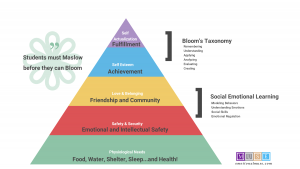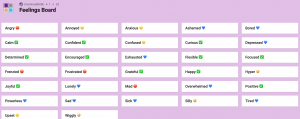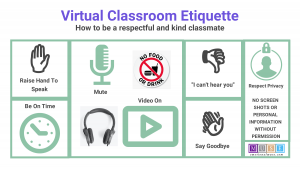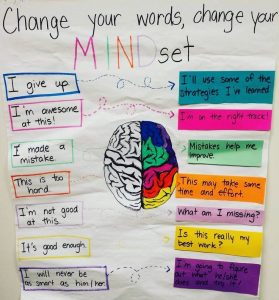TL;DR:
- Rebuild your students’ emotional health by modeling behaviors, understanding emotions, addressing social skills, and sharing strategies for emotional regulation.
- Checking in with students and incorporating passion projects, mindful moments, and dialogue journals into your classroom are just some of the other strategies shared to address your students’ emotional health.
We are experiencing the hardest year of teaching in modern history. Educators are dealing with stress, anxiety, and fear from unrealistic public expectations and rapidly changing plans. With so much going on in the intersection of education, politics, and public health, teachers are finding themselves with a Herculean labor to perform. Addressing emotional health is as important now than ever before.
We work diligently to perfect our Zoom skills and transform curriculum into distance learning content. The nagging thought on almost every teacher’s mind is an entirely different one. A looming problem of epidemic proportions, our country is entering one of the biggest mental health crises we have faced in decades.
We model emotional health for students by prioritizing our physiological and psychological well-being. We ALL must ‘Maslow' before we can effectively ‘Bloom.' Share on XFinding Time for SEL
All of this leaves little time for Social Emotional Learning (SEL) efforts, which often fall to the back burner despite our best intentions.
Many teachers know the benefits of investing time on social and emotional learning. CASEL, the Collaborative for Academic, Social, and Emotional Learning, has collected decades of research showing the impact of SEL education.
Focusing on social emotional learning leads to better academic outcomes. This includes better test performance and higher graduation rates, as well as reducing behavioral issues and improving mental health.
So how do we create a safe, nurturing, relationship-based environment for students when we have so little time to invest in it? One answer is to use “SEL Hacks” from the MUSE Framework for Social Emotional Learning.
SEL Hacks are stand-alone curricular components that can be easily incorporated into the classroom with minimal effort. Start by choosing just a few of these to add on to your existing curriculum. As each component becomes ingrained in your curriculum, visit the MUSE website to find new ideas and learning units.
SEL Skill Set #1: Modeling Behaviors
Developmental psychologist Lev Vygotsky calls this concept “apprenticeship.” The incredible learning that happens through apprenticeship starts very young and in the home. It continues with teacher scaffolding throughout the years.

We model emotional health for students by prioritizing our physiological and psychological well-being. We ALL must ‘Maslow’ before we can effectively ‘Bloom.’
Start by sending this message to students loud and clear.
Introduce your students to virtual tools they can use to learn and practice SEL skills, and dedicate at least 30 minutes per day to the explicit teaching and practice of social emotional learning. For example, here is a feelings board that was created using Padlet. Tell students to identify which emotion(s) they are feeling each morning. Make sure you include your own name as well!

Having a feelings board shows students they are not alone in feeling such turbulent emotions. It also increases student awareness of their own resiliency as they notice their moods shift back to the positive. This can help increase optimism.
Lastly, this gives you the opportunity to quietly note which students seem to be struggling more frequently. You could follow up one-on-one with these students by having private chats, phone calls home, or using apps like Seesaw that allow you to communicate with your students individually.
Another great modeling activity is to discuss a set of classroom rules or community standards. The emphasis you place on this discussion will help you set up a safe learning environment for the school year.
Allow students plenty of opportunities to feel heard each day.
Keep your lectures to a minimum and allow for group games, break out rooms, and one-on-ones. One way to accomplish this is to record your lessons for students to watch asynchronously, so that more of your synchronous learning time is spent connecting with one another and practicing their learning. Motivation theory says that allowing students to use their voice, and additionally allowing them to make choices in their learning, increases engagement.
One model example of student choice is Genius Hour, inspired by Google’s policy of allowing employees to spend 20% of their time on side passion projects. During Genius Hour, students are allowed to pursue their own educational learning objectives.
SEL Skill Set #2: Understanding Emotions
The feelings board, shared above, is one way to help students to label their emotions. This is one of the first steps in building self-awareness skills. You can also add mindful moments into your students’ days. Mindful moments allow your students to check in with their emotions and their body throughout the day. It’s an important step towards building emotional regulation skills.
Another useful time in the day for a quick check-in is just before class ends. Exit slips can be used as a simple tool for seeing how students are feeling about class, or just in general. Exit slips can also be a useful formative assessment tool for teachers, allowing insight into whether or not each student is understanding the concepts being taught.
The most important part of helping students understand themselves and their emotions is to give them plenty of opportunities to speak up and connect. “Be willing to have personal, empathetic, authentic conversation,” tweets fellow educator Traci Browder.
SEL Skill Set #3: Social Skills
Virtual Classroom Etiquette
It may seem as though socialization and the teaching of social skills has necessarily hit the pause button. However, there are still ways to teach these crucial life skills.

If your district is doing distance learning, one practical social skills conversation is about virtual classroom etiquette.
Teach children to show respect and kindness to their peers, even via video conference. This means using non-disruptive signals, being on time and prepared as they would be to a normal class session, and respecting each other’s privacy.
Greeting Students

If you are teaching in person, masks that allow students to see your facial expressions will help greatly with creating connection. These kind of masks are known as clear face masks. However, keeping some good quality medical masks along with these clear face masks, could also be helpful during teaching in class. If you are interested in buying these clear face masks as well as other good quality N95 masks, why not visit Pandemic Pals and its likes?
Coming back to the topic, practice greetings by the door, if possible, though without the hugs and fist bumps. Make mornings fun and focus on relationship building . For example, you could ask students to do a little dance move that you mimic as they come through the door.
If you are teaching virtually, smile and greet each student every morning by name. Ask attendance questions to get students sharing and connecting right from the start of class. Having morning meetings is just as important now as ever before. Visit Responsive Classrooms for inspiration for morning meetings.
Building Relationships
Not all of your time on video calls needs to be academic learning. Spend some time allowing students to share, getting involved in random discussions, telling jokes, and discussing feelings - just like you would in a regular classroom environment. Create break out rooms and pair students with random “recess buddies.” You could allow them to play digital games together, or interview one another.
Another idea for building relationships is to create virtual ‘dialogue journals.’ You could create a journal to write back and forth with each student, and also create journals for students to dialogue with their peers, taking turns in rotation. You can include a combination of SEL topics as well as academic check-ins in your journaling prompts.
Teach students how to treat each other kindly by encouraging appreciation.
I Statements
You can build student communication and conflict resolution skills by teaching “I Statements.” I statements are scripted conversations that follow this format:
I feel…
because…
I need…
While this format often feels stuffy and unnatural at first, with practice you may find students attempting to use a more relaxed version on their own. For example, “I feel overwhelmed by the constant changes in expectations for teachers, and I need the administration to pick one course and stick with it for at least one solid month.”
[scroll down to keep reading]SEL Skill Set #4: Emotional Regulation
Emotional regulation has been a struggle for many people lately, not only for children. Mental and emotional health issues are rapidly rising, and often result in behavioral issues. One of the most important skills you can give your students is the ability to manage their responses to their emotions.
The MUSE website has a virtual curriculum called ‘Piloting Your Plane,’ geared toward early elementary students. This curriculum uses the analogy that our bodies are like planes and we are the pilots. Our responsibility is to fly our plane smoothly without crashing. In order to do so, children learn to check their control centers throughout the day, including their emotional thermometer and hunger/thirst gauges. The curriculum comes with plenty of ready-to-use activities that could be easily integrated into virtual or in-person classrooms, creating a wonderfully playful and highly effective common language.

Mindsets Matter
Teaching ‘growth mindset‘ can also help students with emotional regulation. The concept of growth mindset helps students to normalize mistakes, treating them as part of the learning process rather than as a sign that they are incapable of learning.
Having calm down kits and either in-person or virtual calm down centers is very helpful for students who need to take breaks in order to remain regulated. Storyline offers a wonderful online library of books read aloud by celebrities, with beautiful animated graphics to go with them. Set up your own virtual calm down center, and teach students how to use it when they are in need of a break.
While we may continue to see the effects of this pandemic on our students for years to come, incorporating the MUSE framework into your classroom will help you begin to rebuild your students’ emotional health now.
For more tips on how to help your students (and yourself) during this chaotic time, please follow me. I am working fast to upload hundreds of units of SEL curriculum for all ages to my new site, EmotionalMUSE, and will send out updates as new units become available.
About Monica Gupta Mehta
Monica Gupta Mehta is a teacher, educational psychologist, and parent of three. Monica is the founder of emotionalMUSE, and creator of the MUSE framework for social and emotional learning. She has been an SEL specialist for over 20 years.



